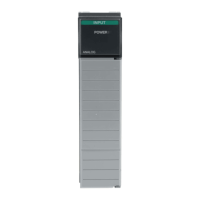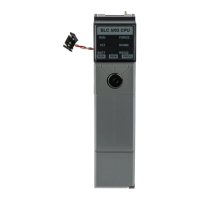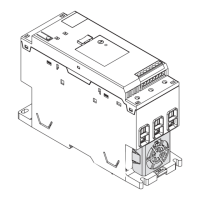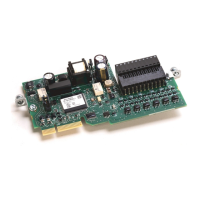Multi-Axis Coordinated Motion Instructions
448 Rockwell Automation Publication MOTION-RM002H-EN-P-February 2018
Accel Jerk
Accel Jerk defines the maximum acceleration jerk for the programmed move. For
more information on calculating Accel Jerk, refer to the Jerk Units section below.
Decel Jerk
Decel Jerk defines the maximum deceleration jerk for the programmed move. For
more information on calculating Decel Jerk, refer to the Jerk Units section below.
Jerk Units
The jerk units define the units that are applied to the values entered in the Accel
Jerk and Decel Jerk operands. The values are entered directly in the position units
of the specified coordinate system or as a percentage. When configured using % of
Maximum, the jerk is applied as a percentage of the Maximum Acceleration Jerk
and Maximum Deceleration Jerk operands specified in the coordinate system
attributes. When configured using % of Time, the value is a percentage based on
the Speed, Accel Rate, and Decel Rate specified in the instruction.
Termination Type
For Master Driven Speed Control (MDSC), when all sequential instructions run
in the same mode (Master Driven Mode or Time Driven Mode), then all
termination types are supported. If the termination type switches in the
coordinated motion queue, errors may generate depending on the sequence of
motion types.
The following is only applicable if a move on a slave Coordinate System uses a
Blending Termination Type (Termination Types 2, 3, or 6) and is programmed in
MDSC mode.
If you use the Calculated Data returned in the last MCLM instruction of a motion
sequence to program the length that the master axis has to move for the motion
sequence to go PC, then there is the possibility that you will have to add a small
safety margin to the Calculated Data. If you do not add this margin, there is a
chance that the motion of the master axes completes before the entire motion
sequence programmed on the Slave Coordinate System finishes. If this occurs, the
last motion instruction on the Slave Coordinate System remains active and does
not go PC. The value of the small safety margin is dependent on the Command
Tolerance used for the first and last move in the motion sequence as follows:
Tip:
Safety margin calculations use the following abbreviations:
CUP = Coarse Update Period
MAS = Master Axis Speed
1. If a Command Tolerance value of 100% is used for the first move in the
sequence then:

